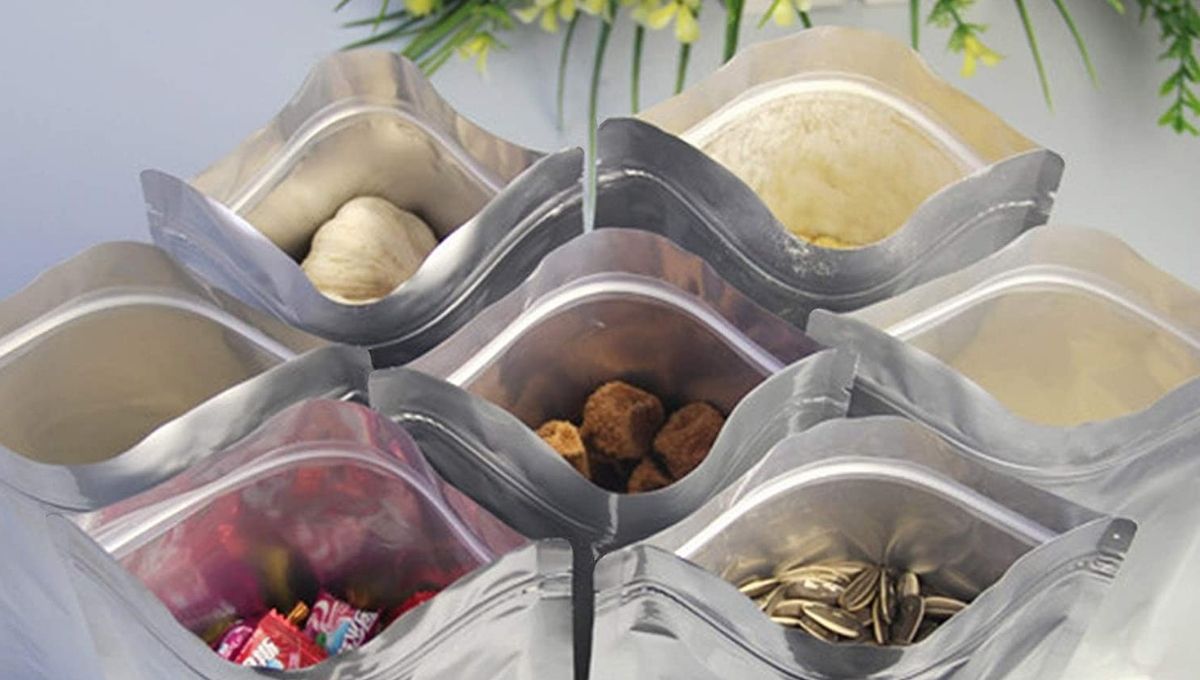Last Updated on October 12, 2022 by admin_hunter
Mylar bags are gaining popularity in food packaging because of their ability to keep food safe and fresh for a long time. They do this by preventing the growth of oxygen-dependent microorganisms such as fungi within the container, thus keeping your food from turning rancid.
If you are looking for the best storage solution for your food products, mylar bags with oxygen absorbers are a great investment.
- Why Is Mylar Good for Long-Term Food Storage?
- Mylar Bags With Oxygen Absorbers
- How to Use Mylar Bags for Long-Term Storage
- What Can You Store in Your Mylar Bag?
- Why Don’t My Bags Harden When I Use an Oxygen Absorber?
- Why Are There Pinholes of Light Coming in My Mylar Bag?
- How do you seal a Mylar bag?
- Conclusion
Why Is Mylar Good for Long-Term Food Storage?
Mylar is great for food storage because it is non-porous, reflects light, and is impermeable to gas. Mylar is a strong, durable polyester film made from BoPET (Biaxially-oriented polyethylene terephthalate), which is composed of stretched polyethylene terephthalate.
Mylar is usually reinforced with an aluminum foil layer to prevent moisture or water from passing through the bag, as the presence of water can ruin food. This material is excellent for long-term food storage because it is:
- Impermeable to gas, which blocks the transmission of oxygen to improve the shelf life of the contents
- Light-resistant, which protects food from the spoiling effects of photodegradation
- Flexible, which allows the bag to conform to the items inside
- Durable and puncture-resistant, which means the bags can be filled and sealed without the contents ripping the bag apart
- Cheap, which means they offer great value compared to other storage solutions
- Easy to use, so the bag has a relatively short learning curve
Mylar Bags With Oxygen Absorbers
Mylar bags for foods are commonly used with oxygen absorbers. An oxygen absorber is a small piece of material (usually iron oxide powder) that absorbs oxygen, which prolongs the shelf life of food. When iron oxide powder reacts chemically with oxygen (or rusts), it eliminates oxygen from the air.
If you find that your oxygen absorber did not work, it’s probably because the bag has a compromised seal. You can easily determine if an oxygen absorber is functional by pinching the packet. If air escapes, you know there is a hole in the bag, so it is time to replace it.
How to Use Mylar Bags for Long-Term Storage
To use mylar bags, you first need to find the right type for your food storage packaging needs.
Mylar bags come in many styles and sizes. A good rule of thumb is to purchase two bags: small sized and large sized. The 1-gallon mylar bag is a small sized bag, ideal for storing smaller food items such as fruits, dehydrated meats, salts, baking powders, and spices.
For the larger sized alternative, go for the 5-gallon mylar bag. This bag is large but not too heavy, and it fits perfectly in a 5-gallon bucket. You can use it for bulk storage of grains such as wheat, beans, or rice.
In terms of thickness, you generally want your bag to be as thick as possible so it’s efficient at keeping out light and moisture. While you will typically have to pay more for a thicker bag, it’s still good value for the money.
Mylar bag thickness usually ranges from 3.5 mm to 8 mm. Some 3.5 mm bags are too thin for food storage because they allow light to penetrate the exterior, which can potentially damage the contents of the bag.
You will need to determine the right size and thickness for your needs, depending on what foods you plan to store.
What Can You Store in Your Mylar Bag?
You can store dry and low-fat foods for up to 10 years when you use Mylar bags with oxygen absorbers. Examples include:
- Spices
- Cereal
- Powdered milk
- Dry beans
- Sugar
- Pasta
- Grains
- Flour, etc.
In some cases, you have to rotate the food items after 2 to 5 years to prevent spoilage. This includes food such as:
- Milled grains
- Dried eggs
- Wet or fresh foods
- Seeds
- Nuts
- Dried meat/jerky
- Granola
- Chips/greasy junk food
- Brown sugar
- Brown rice
- Pearl barley
- Whole-wheat flour
You should generally not use your bag for the long-term storage of moist and/or oily foods. Storing moist food where there is limited oxygen can lead to botulism poisoning, as the botulism bacteria thrives in low/no oxygen environments.
The moisture requirement for botulism to grow is 35%, but studies suggest that food stored in airtight containers should keep moisture to 10% or less. The oils in foods can also cause your food to turn rancid in 3 to 12 months.
Why Don’t My Bags Harden When I Use an Oxygen Absorber?
An oxygen absorber will often cause the bag to compress after sealing due to the absorption of oxygen from the air within. However, oxygen only makes up 20 percent of the air. The other 80 percent is nitrogen and will be left intact. But don’t worry, nitrogen won’t harm your food.
What’s more, there is a certain food-to-headspace density that is needed for contraction to occur. If the packets do not have the right density/shape, the absorbers will only cause mild contraction. To put this into perspective, a thin 3.5 mm bag will generally compress more than a thicker 7 or 7.5 mm bag.
Why Are There Pinholes of Light Coming in My Mylar Bag?
The foil layer of a Mylar bag comes is designed with small pinholes that affect the foil structure. These pinholes are in the bag’s specification, and they are usually too small to affect the integrity of the bag or to allow significant photodegradation. The other transparent layers help preserve the bag’s structural integrity.
How do you seal a Mylar bag?
Once your food is in the Mylar bag, you will need a heat source to seal the outer package.
It is important to invest in a good sealer that will allow you to control the heat. Too much heat can cause holes on the sealant layers, while insufficient heat can result in a poorly sealed bag. If you are working on a budget, a hair straightener or clothes iron can work.
Alternatively, you can invest in a vacuum sealer to vacuum seal your food for long term storage. Vacuum sealing helps to not only seal the barrier layer, but also removes excess air from the bag.
Shake the bag for a few seconds to make the food particles settle properly within the bag. This will ensure you can store more food inside the bag with less air.
Now, apply heat until the two sides of the aluminum foil material melt into liquid and join together to become one. When you remove the source of heat, the material will solidify to create a tight seal.
When applying heat, make sure the bag is completely flat and does not contain any foreign particles. If a pocket of air penetrates the seal, it will compromise effectiveness. Similarly, small particles of debris can affect the integrity of the seal.
Conclusion
Mylar bags with oxygen absorbers can help you store food for long periods of time at an incredibly low failure rate. Certain foods such as rice can last for more than 20 years! This is mainly because of the bag’s strong barrier properties, which keeps out air and other substances that may lead to food color change or cause your food to become rancid.
For some food storage ideas, take a look at our guide for the best survival foods you can store in your Mylar bag.

